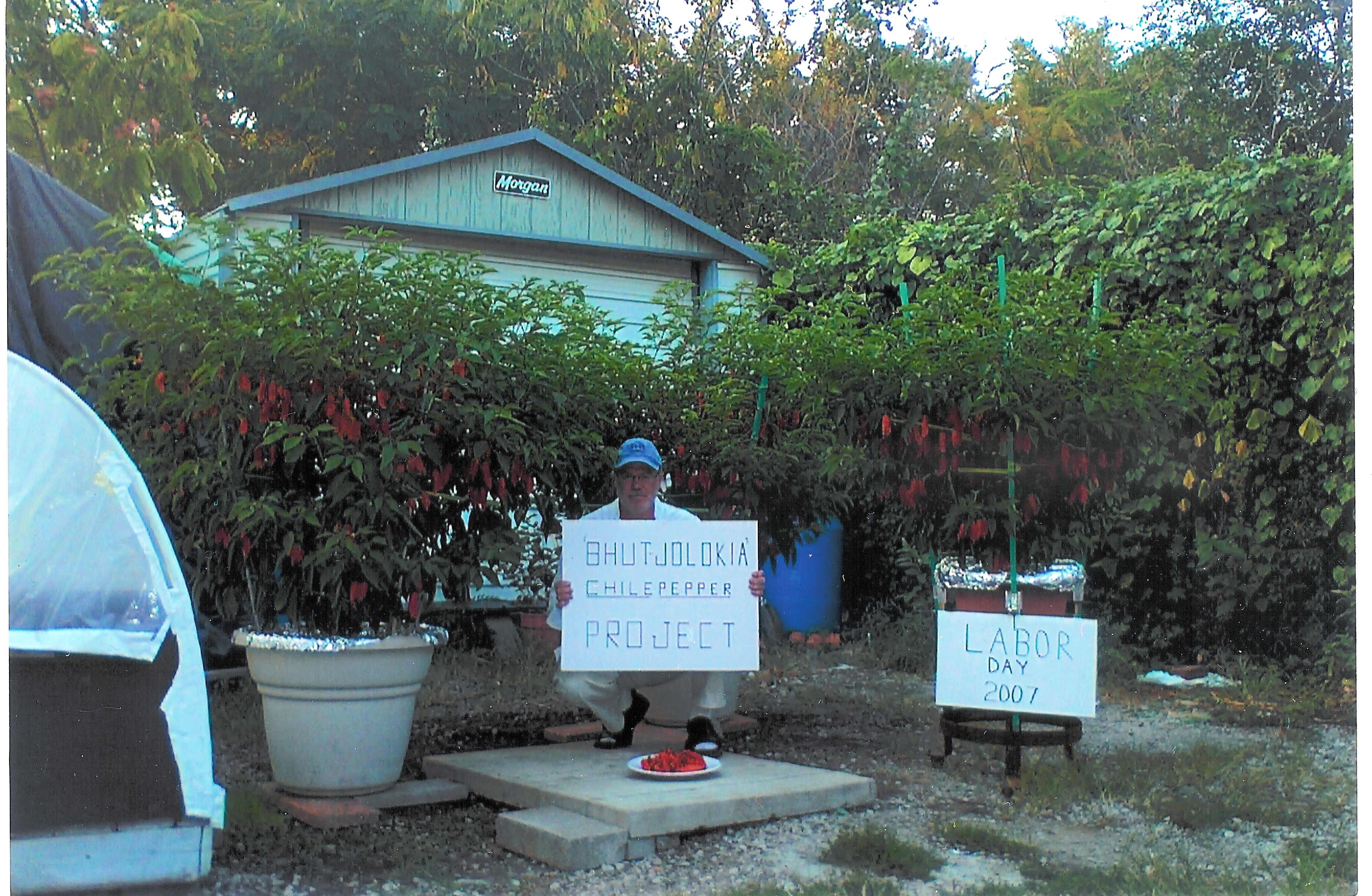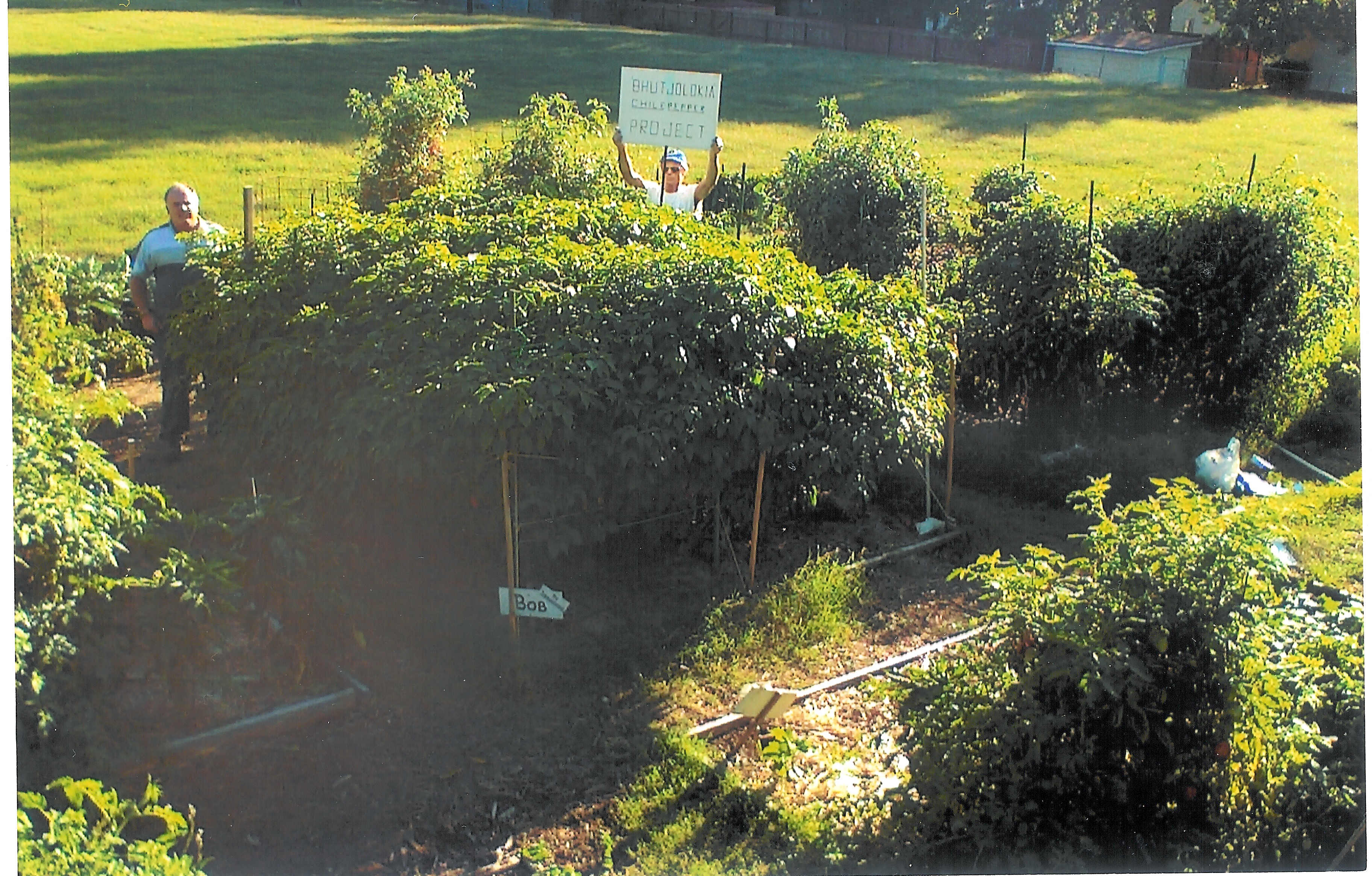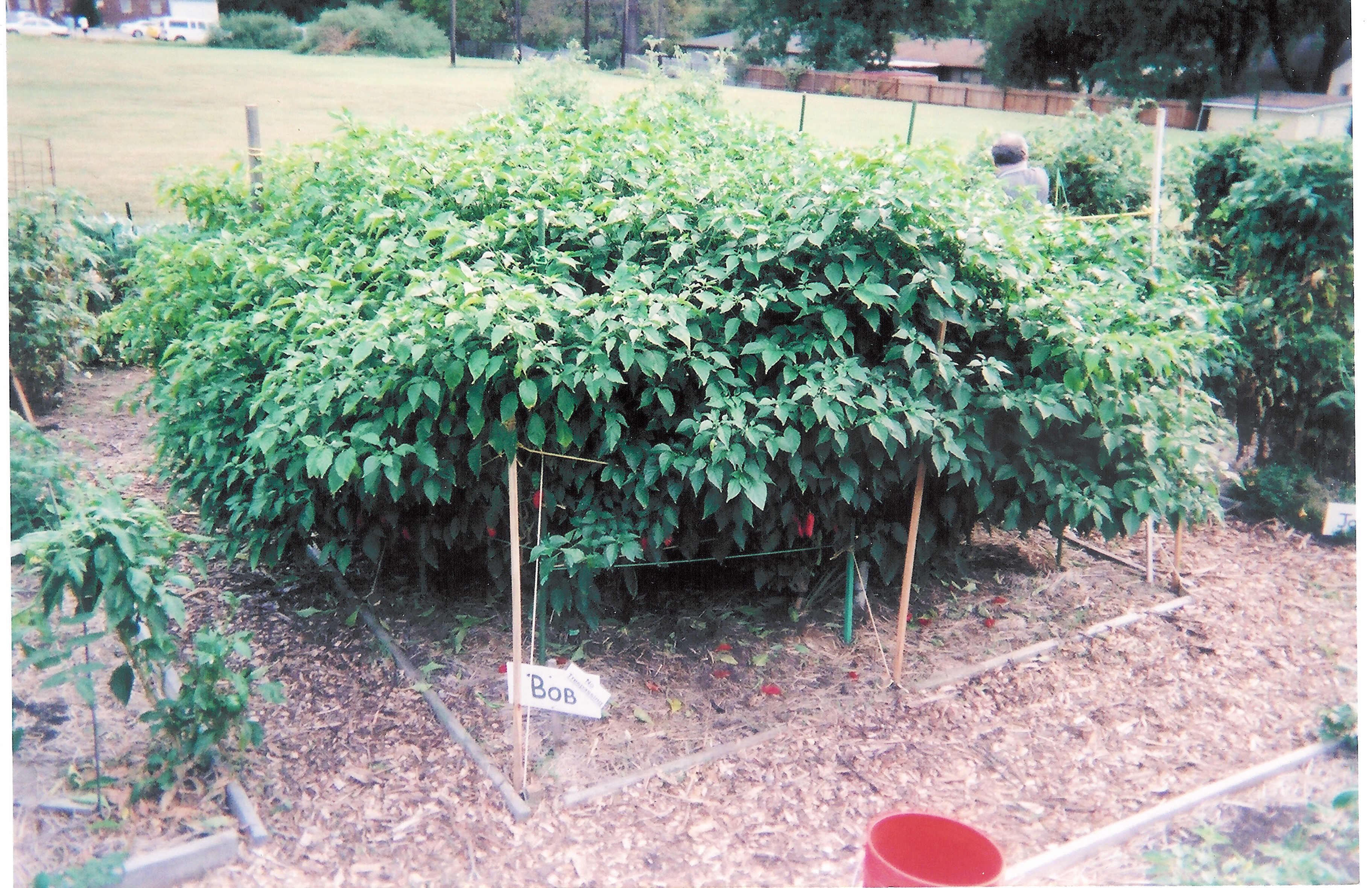 |
 |
 |
 |
 |
 |
 |
 |
 |
Home |
New |
Schedule |
Services |
Catalog |
Links |
Page |
Us |
Page |
 |
 |
 |
 |
 |
 |
 |
 |
 |
Home |
New |
Schedule |
Services |
Catalog |
Links |
Page |
Us |
Page |
|
|
 |
 |
|
|
Over the past twelve years I have researched and assembled numerous articles on the seemingly simple topic of how to grow chile peppers. The vast majority of this information that was obtained, none elaborated or gave detailed step by step cultivation procedures on how to coax "maximum" fruit yields from the chile plants inherent potential. This quest excluded all genetically engineered seeds and highly specialized breeding techniques. The search narrowed further when an eco-minded focus was adopted. Popular garden magazines, seed company concise advice, extension service publications, media and internet search engines with with their ad-infinitum capsicum websites etc., have yet to corroborate simultaneously and incorporate the best overall cultivation practices. Comprehensive tried and true educational instructions that could teach open-pollinated chile growers how to quadruple their yields safely would be like discovering gold nuggets in their compost. Such propagation knowledge would be beneficial to the preservation of heirlooms, botanical treasures, wild and endangered capsicums. It is widely know that arable land spread over our planet is being depleted by erosion, urban sprawl, desertification and especially human mismanagement. Readily available fertile farm land is decreasing at an alarming rate. Horticultural training and the skills to produce higher yielding vegetable crops on smaller plots of ground has become a necessity to meet consumer demand. Our former one hundred square foot Bhut Jolokia Chile Pepper Project was and is a workable example of soil sustainability. The combined results were low in cost, non-polluting, with an exceptionally large harvest to boot. This and other forthcoming garden exemplars will demonstrate the complete practicality of our growing program. To substantiate these forementioned statements and other evidential production achievements from past seasons. Our chile, tomato and cucumber plots were shown to Master Gardeners, vegetable growers and news reporters. Most notable constituents were recorded, photographed, weighed, counted, measured and filmed. This accumulated data with adequate confirmation supports the premise that these maximum yield, resource efficient growing systems do in fact exist. These systems are applicable for field, potted and greenhouse operations. To all capsicum baccatum and chinense aficionado's, etc., if you would like to grow world-class chile plants that can potentially yield five hundred (500) to one thousand (1000) fruits per plant you might seriously consider our innovated ideas. Now, http://www.mrpeppertalks.com is pleased to make available on the internet a brief summary review of record breaking chile plants that did produce as depicted.  
Capsicum Colossus with yours truly keeping balanced with a twenty two inch diameter serving of Chapeu de Frade chile peppers. This particular rainforest baccatum became my first major yield record breaker back in 1998. Conventional horticultural literature at that time (from experts in the petro-chemical field) stated that large beautifully lush chile plants would be fruitless. Fortunately I tuned them out, unfortunately this widespread myth still dominates today. Consequently it is future growers that are deprived from experiencing a wonder like the above.  
It does not matter whether your nearsighted or farsighted with Chapeu de Frade. The next photographs require little focusing to recognize the plethora of peppers from this plant.  
 
| Return Home | What's New | Events Schedule | Our Services | On-line Catalog | Great Links | FAQ Page | Contact Us | Download Page | |
||
 |
 |
